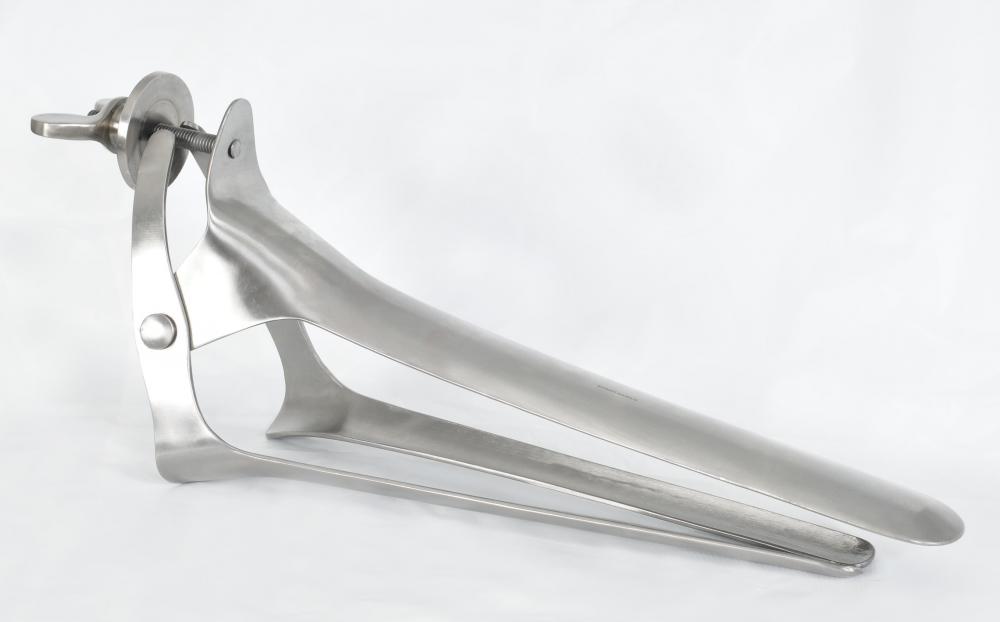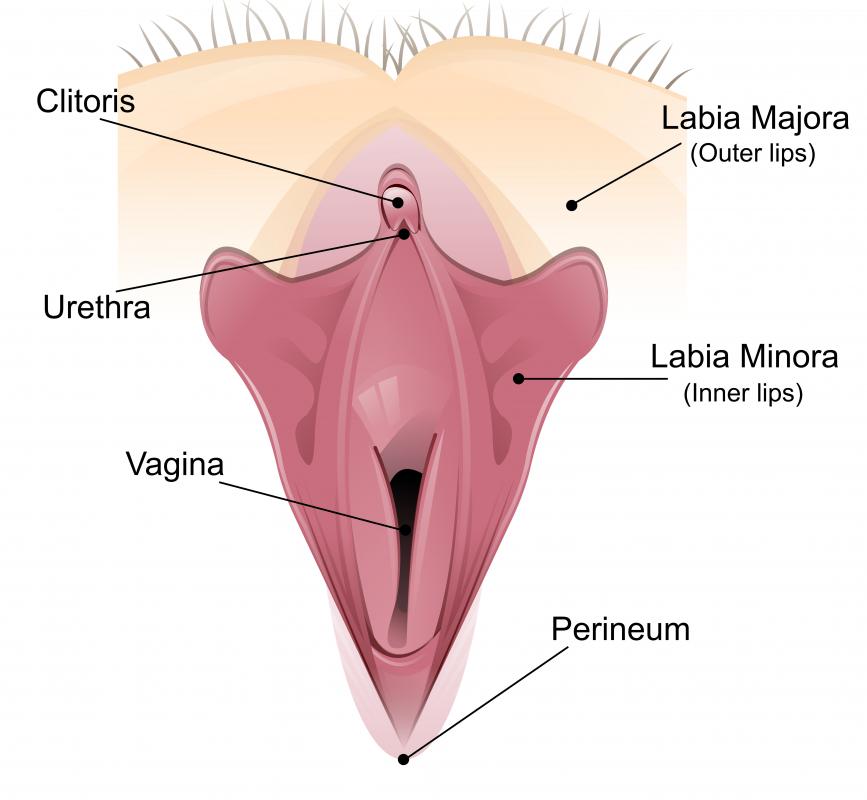At WiseGEEK, we're committed to delivering accurate, trustworthy information. Our expert-authored content is rigorously fact-checked and sourced from credible authorities. Discover how we uphold the highest standards in providing you with reliable knowledge.
What Is a Pelvic Speculum?
A pelvic speculum is a medical instrument used primarily to perform gynecological exams. There are a couple of primary varieties, but in nearly all cases their main goal is to open the vagina and cervix for the purposes of a medical exam, and they usually also enable the collection of cell scrapings from the inner cervical walls that can be analyzed to test for early indicators of problems like cervical cancer and certain sexually transmitted diseases. Most healthcare professionals recommend that all women of childbearing age submit to “well woman” or regular gynecological check-ups once a year. The experience isn’t always pleasant and specula insertion can be uncomfortable, but in most cases the internal examination doesn’t usually take more than a few moments.
Basic Concept

This tool is usually shaped somewhat like blunt pliers that normally are about the length a pencil or standard ink pen. Most have at least one blade, though cutting isn’t normally the goal; rather, the blades are designed for scraping and holding tissues. The tool is normally designed to fit comfortably in the hand and can be easily stored and cleaned.

Speculum is the Latin word for "mirror," with roots in the word specere, which means to look or observe. There are a number of medical tools with this name that are usually designed to give care providers a way to better see or expose some area of the body. A specifically pelvic speculum is almost always limited to what’s known politely as the “pelvic region,” which is normally understood to be the female reproductive tract. It is also referred to as a vaginal speculum because it is inserted into the vagina.
Different Types

There are usually a couple of different variations when it comes to shape. One of the most common is the bi-valved vaginal speculum, which has two blades that separate to allow access to the cervix; this is also sometimes called a graves speculum and shaped like a duckbill. There are also pelvic specula with one blade, three blades, or even no blades, as is the case with most models made of glass.

Different materials can be used, too. Traditionally, a pelvic speculum is made from metal. It is sterilized after each use and can be reused countless times. Some gynecological offices use disposable plastic vaginal specula, which are used only once prior to disposal. Glass specula are less common; they are tubular in shape and contain no moving parts.
Exam Basics and How The Tools Are Used

During a speculum exam, the patient normally lies on her back on an examining table, with her knees bent. Her feet may be placed into metal stirrups attached to the table, or she may place her feet directly on the table. The physician inserts the pelvic speculum into the vagina while the speculum is in the closed position. By separating the blades of the vaginal speculum, the physician is able to observe the internal cavity of the vagina and cervix. A screw is used to keep the blades separated throughout the exam. A weighted speculum may also be used to enable the examiner to use both hands for other actions, as in surgery.

Samples and scrapings may be collected directly from the tool, or a swab may be placed into the vaginal opening while the speculum is holding it open. These samples are normally sent off to a lab for testing and processing. While the cavity is exposed, the physician normally performs a manual exam and looks for other signs of health as well.
Other Related Tools
There are other types of specula that are related in basic format, though their uses can be very different. For example, a rectal speculum may be used during colonic hydrotherapy. A rectal speculum is inserted into the anus so that a small hose can enter the lower intestinal tract for irrigation purposes. Both vaginal specula and rectal specula are commonly used for anal surgery.
An eye speculum is used during eye surgery, such as laser-assisted in situ keratomileusis, commonly referred to by the acronym LASIK. The eye speculum holds the eyelids apart and prevents the patient from blinking. Similarly, a nasal speculum is used to comfortably hold the nostrils open for examination or procedures. Unlike most other types of specula, ear specula are cone-shaped and do not contain moving parts.
AS FEATURED ON:
AS FEATURED ON:
















Discussion Comments
@MrsWinslow - I find a pelvic exam when the speculum is plastic is not as painful. The plastic speculums are more lightweight and they don't tug as much.
Also, if you are having annual exams, you may not need them. AACOG (the major professional organization of OB/GYNs) does not recommend annual exams for healthy women. It's every other year from 21 to 30 and then if your last three Paps were all normal, you can do once every three years.
A lot of doctors are still doing Paps (I assume that's what you're talking about, since that the main use for a speculum) every year, but that's just out of force of habit. If your doctor is one of them, tell him or her that you know it's no longer recommended and you don't want it. (Assuming, of course, that you do not have HPV.)
I find my pelvic exams incredibly painful. The weight of speculum just seems to pull on everything and it hurts so bad. I've never seen a doctor who's able to mitigate it at all. Does anyone have any suggestions?
Post your comments